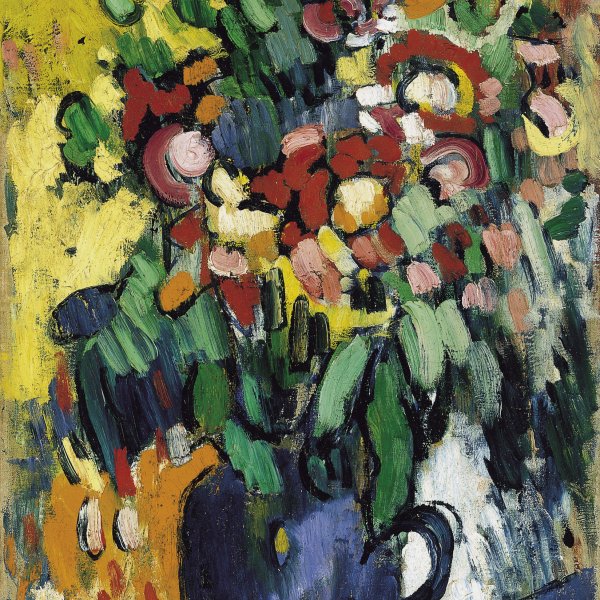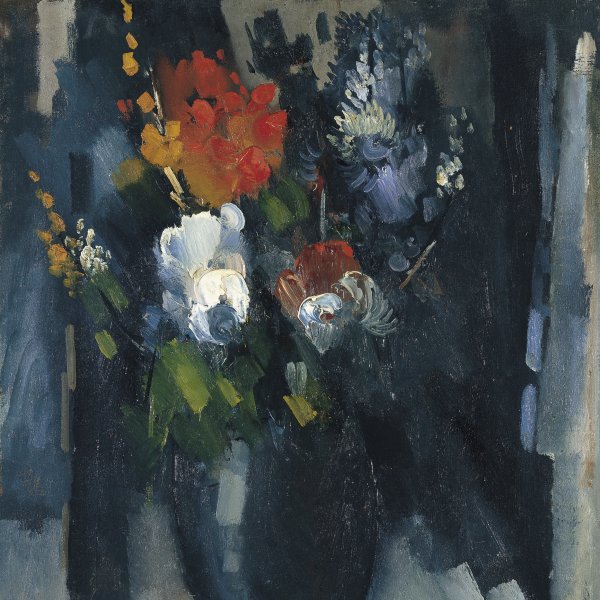Maurice De Vlaminck
París, 1876-Rueil-la-Gadelière, 1958
Maurice de Vlaminck was born in Paris, the son of musicians, but grew up in Le Vésinet, where the family moved in 1879. When he was sixteen he bought his first racing-bike and decided to become a professional cyclist. For two years he was able to support himself and his family-he married in 1894-through his racing, but then a bout of typhoid fever put an end to his sporting career. In the meantime he had begun to draw, but it was not until 1900 and a chance meeting with Derain while he was on leave from the army that Vlaminck decided to paint seriously. His friendship with Derain lasted throughout his life. First, they shared a studio in Chatou and then in 1913 they went together to Marseilles and Martigues. In the early 1940s they met again at the opening of Arno Breker's exhibition in Berlin. There are at least two portraits of Vlaminck by Derain, and one by Vlaminck of Derain.
Vlaminck made his first public appearance as an artist in 1905, when works of his were exhibited in the Salon d'Automne, together with works by Camoin, Marquet, Derain, Manguin and Matisse. In 1907, after seeing the Cézanne retrospective, he joined the Fauves. In 1911 he made his first trip to London. Throughout the First Word War he lived in Rouen, writing poetry at this period. Vlaminck had already published two novels of a more or less overtly pornographic nature, one in 1902 and the other in 1903, both of them illustrated by Derain. After the war Vlaminck travelled throughout France, although he produced most of his work around Paris, near the Seine. In the course of the Second Word War he painted mainly landscapes and still-life paintings which were characterised by a sombre palette and thick brushstrokes. By the time of his death in 1958, Vlaminck had published a dozen volumes of autobiography.
Maria de Peverelli
Vlaminck made his first public appearance as an artist in 1905, when works of his were exhibited in the Salon d'Automne, together with works by Camoin, Marquet, Derain, Manguin and Matisse. In 1907, after seeing the Cézanne retrospective, he joined the Fauves. In 1911 he made his first trip to London. Throughout the First Word War he lived in Rouen, writing poetry at this period. Vlaminck had already published two novels of a more or less overtly pornographic nature, one in 1902 and the other in 1903, both of them illustrated by Derain. After the war Vlaminck travelled throughout France, although he produced most of his work around Paris, near the Seine. In the course of the Second Word War he painted mainly landscapes and still-life paintings which were characterised by a sombre palette and thick brushstrokes. By the time of his death in 1958, Vlaminck had published a dozen volumes of autobiography.
Maria de Peverelli







